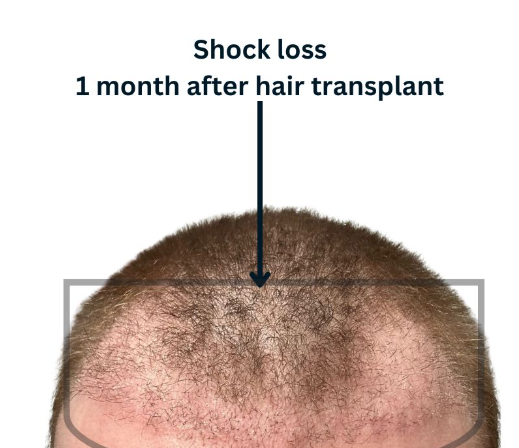Hair transplant procedures are becoming increasingly popular across Europe, and Albania has emerged as a preferred destination due to its affordability, quality healthcare standards, and skilled specialists. While many are familiar with countries like Turkey, especially due to its wide promotion and celebrities like Wayne Rooney, Albania offers equally competitive alternatives. This article explores everything you need to know about hair transplant recovery in Albania, including what to expect in the first days, how to care for your scalp, and tips to maintain long-term results. If you’re researching “Hair Transplant Albania,” “Hair Transplant Tiran,” or comparing “Hair transplant Albania cost” and “Hair transplant packages Albania,” understanding the recovery process is essential.
Table of Contents
ToggleFirst 3 Days After Surgery
Pain, Swelling & Sleeping
The first three days after a hair transplant are crucial. Most patients experience mild to moderate discomfort, especially at the donor site. Pain is usually manageable with over-the-counter painkillers or medication prescribed by your clinic.
Swelling may occur on the forehead and around the eyes, peaking around day two or three. This typically subsides within a few days. Applying cold compresses to the forehead (not the transplanted area) can help minimize swelling.
Sleeping in an elevated position (around a 45-degree angle) is recommended to reduce swelling and avoid disturbing the grafts. Travel pillows or adjustable chairs can help maintain the correct posture.
It’s also normal to experience tightness or mild itching during this period. These are signs of healing and should gradually fade away.
Hair Washing Instructions
When and How to Wash
Proper hair washing is critical to avoid infection and protect the newly implanted grafts. Most clinics in Albania advise the first gentle wash 48 to 72 hours after surgery.
Steps to wash your hair safely:
-
Apply a moisturizing lotion or foam to the transplanted and donor areas.
-
Wait 20–30 minutes to soften scabs.
-
Rinse gently with lukewarm water.
-
Apply shampoo onto your hand and gently lather it.
-
Pat the shampoo lightly onto the scalp, without rubbing.
-
Rinse slowly using a cup or low-pressure water stream.
Repeat this process daily for 7–10 days. Avoid rubbing or scratching the scalp. Scabs will naturally fall off when they are ready. Wearing a loose, clean cap outdoors during this time can help protect your scalp.

Hair Shedding Phase (Shock Loss)
Is It Normal?
Yes, shedding of the transplanted hair within the first month—known as “shock loss”—is completely normal. It occurs as part of the natural hair cycle, where the shafts fall out but the follicles remain healthy.
This phase typically happens between weeks 2 to 6 after surgery. Around the third month, new hair starts to grow—often fine at first, gradually becoming thicker. Full results are generally visible between 9 and 12 months.
Although this stage can be emotionally unsettling, knowing it’s temporary can ease stress. Clinics may recommend treatments like minoxidil to support regrowth. Following your clinic’s guidance and maintaining a healthy lifestyle will help ensure a successful outcome.

Long-Term Care Tips
How to Maintain Results
Maintaining strong, long-lasting hair transplant results requires consistent attention and healthy routines that support both scalp recovery and hair regrowth. Here are the most important strategies:
- Protect your scalp from sunlight: Avoid direct sun exposure for at least 3 months. UV rays can damage healing skin and weaken grafts. Wear a breathable, soft hat when outside.
- Use proper hair products: Choose sulfate-free, pH-balanced shampoos and avoid harsh chemicals or styling products that can irritate the scalp.
- Avoid smoking and alcohol: These habits restrict blood flow to the hair follicles, slowing down healing and weakening new hair growth.
- Follow a nutrient-rich diet: Incorporate foods high in protein, iron, zinc, biotin, and vitamins A, C, and E. Nutrition directly affects follicle strength and hair density.
- Stay hydrated: Water keeps the scalp healthy and supports cellular repair and hair strand formation.
- Manage stress levels: Chronic stress can lead to hair loss. Practice stress-reducing activities like yoga, breathing exercises, or walking.
- Attend all follow-up appointments: Your surgeon will monitor your recovery, address complications early, and may adjust your care plan if needed.
Clinics may also recommend post-op treatments like minoxidil (a topical spray that boosts growth), finasteride (a DHT blocker), or PRP therapy to nourish follicles with growth factors.
Once cleared by your doctor, gentle scalp massages can improve circulation and support nutrient delivery to grafts.
Taking monthly photos is a great way to measure progress. While results take time, those who follow these long-term care tips often report excellent density, natural appearance, and high satisfaction.
Recommended Post-Op Recovery Timeline
| Time Frame | Activity / Symptoms |
|---|---|
| Day 1–3 | Mild pain, swelling, strict rest |
| Day 3–7 | First hair wash, return to light activity |
| Week 2 | Resume most daily activities, reduced swelling |
| Week 4–6 | Shedding phase begins (shock loss) |
| Month 3–6 | Initial regrowth appears |
| Month 6–12 | Noticeable improvement in density |
| Month 12+ | Full results visible, optional PRP treatments |
Tips for a Smooth Recovery
- Follow all post-op instructions
- Avoid strenuous exercise and sun exposure
- Use mild, surgeon-approved shampoos
- Don’t pick at scabs or touch grafts unnecessarily
What Should I Do to Ensure a Successful Recovery?
-
Follow Post-Operative Instructions: Adhere strictly to the guidelines provided by your surgeon, including medication schedules and activity restrictions.
-
Maintain Scalp Hygiene: Keep the scalp clean to prevent infections. Use only the recommended shampoos and washing techniques.
-
Avoid Direct Sunlight: Protect your scalp from sun exposure for at least three weeks post-procedure to prevent damage to the sensitive skin.
-
Refrain from Smoking and Alcohol: Both can impede the healing process and should be avoided for at least a week after surgery.
-
Stay Hydrated and Eat Nutritiously: Proper nutrition and hydration support overall healing and hair growth.
Post-Hair Transplant Care: Dos and Don’ts
Proper aftercare is critical for a fast and successful hair transplant recovery. Here’s what to follow:
✅ Do’s
-
Sleep on your back with your head elevated.
-
Follow your surgeon’s aftercare instructions strictly.
-
Stay hydrated and eat a balanced diet.
-
Use gentle, recommended shampoos and conditioners.
-
Attend all follow-up appointments to monitor progress.
❌ Don’ts
-
Don’t touch, scratch, or rub the recipient area.
-
Don’t wear tight hats or helmets for the first few weeks.
-
Don’t swim in pools, oceans, or take long hot showers.
-
Don’t smoke or drink alcohol for at least a week.
-
Don’t perform intense physical exercise during the first 10–14 days.
Frequently Asked Questions
When can I wash my hair after surgery?
You can usually wash your hair 48 to 72 hours after surgery, following your clinic’s instructions closely. The first wash should be gentle and careful to avoid dislodging any grafts.
Will I lose my transplanted hair in the first month?
Yes, this is normal. The transplanted hairs will shed in the first few weeks as part of the shock loss phase. New growth will follow. This process is essential for long-term hair regeneration.
When can I return to work?
For non-physical jobs, most patients return to work in 3–5 days. Physically demanding roles may require a 1–2 week break. It’s also advisable to avoid overly dusty or hot environments during the first week.
Is there any medication I should take?
Your surgeon may prescribe antibiotics, pain relievers, or anti-inflammatory medications. Some may also recommend minoxidil or finasteride to support hair growth. Always consult your specialist before starting any new treatment.
What happens if I scratch the area?
Scratching can dislodge grafts and cause infections. It’s important to avoid touching the scalp during the healing period. If itching is severe, consult your doctor. They may provide you with soothing sprays or creams to reduce discomfort.
How long does the recovery process take after a hair transplant in Albania?
Most of the initial recovery is completed within the first two weeks. However, it may take 6 to 12 months for the transplanted hair to fully grow and the final results to become visible.
How long should I stay in Albania after the hair transplant?
Most clinics recommend staying in Albania for 3 to 7 days after the surgery. This allows time for check-ups and ensures the healing process begins under medical supervision
What are the advantages of choosing Albania for a hair transplant?
Albania offers competitive prices, experienced surgeons, and clinics that meet European hygiene standards. Compared to clinics in Turkey, waiting times are often shorter, which adds to its appeal.



